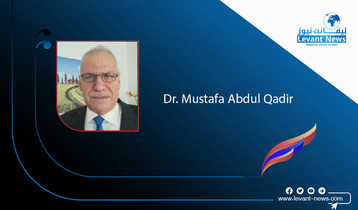-
Attack on Western Sinai: A Striking Shift in Terrorist Conduct

For decades, the geo-strategic characteristics of the Sinai Peninsula turned it into a playground for various types of criminal activities, ranging from the illegal smuggling of drugs and weapons up to accommodating the most dangerous terrorist organizations. However, the recent terrorist attack in western Sinai marks a noticeable shift in the behavior of the terrorist groups that have been operating from the huge Egyptian peninsula since 2013. In particular, the timing and the location of the recent attack are alarming signs that we may be witnessing the birth of a new trend of armed insurgency in that hot region.
On Saturday, 7th of May, the Egyptian military spokesperson announced that a group of “takfiri” elements attacked a water-lifting station eastern of the Suez Canal. Sadly, the attack led to the killing of eleven Egyptian military personnel (one officer and ten soldiers) and the injury of five persons, who were working at the spot. The military spokesperson confirmed that the Egyptian army has immediately started chasing the takfiri elements and quarantined them in an isolated region in the Sinai Peninsula. The next day, the Egyptian President, Abdel Fattah El-Sisi, convened a meeting with the Supreme Council of the Armed Forces (SCAF), where he gave instructions for the military to continue the wide-scale campaign against terrorists in Sinai.
In February 2018, the Egyptian Armed Forces, in coordination with security forces from the police apparatus, launched “Comprehensive Operation Sinai” with the goal to eliminate terrorism from the Egyptian land. About five months before the launch of the extensive counter-terrorism mission that targeted terrorist elements in the Sinai Peninsula and the Delta area northern Egypt, a handful number of unidentified militants attacked a mosque in Bir Al-Abd town in northern Sinai, killing 305 citizens and injuring 128 others. The horrific occurrence of Bir Al-Abd attack, in November 2017, instigated the application of a State of Emergency that continued for four years, until the Egyptian President had decided to annul, in October 2021, as an indication on the success of the state’s counter-terrorism efforts.
In the public Iftar hosted by President El-Sisi during the last week of Ramadan, on April 26th, the topic of achieving sustainable security and socio-economic development in Sinai was loudly celebrated. For the first time ever, the Egyptian President mentioned specific figures of the troops lost and money spent in the decade-long fight against terrorism in Sinai. “We aim to achieve actual development in Sinai. We managed to stabilize the situation there, but we have paid a heavy price for that to happen… the Egyptian army and the police forces had to sacrifice 3,277 of their men, in addition to 12,280 personnel who got serious injuries that prevented them from returning to service;” El-Sisi declared, after saluting the tribal leaders of Sinai for supporting the Egyptian military throughout this lengthy and deadly battle.
Nevertheless, approximately one week after the Egyptian President’s speech, terrorism remerged its head, but in a new color and shape. The statement of the Egyptian military spokesperson, regarding the recent attack in western Sinai, used the word “takfiri” to describe the perpetrators. Usually, “takfiri” refers to Islamist terrorists, whose ideology labels the secular nation-state as “kafir” (i.e.; blasphemous), and thus justifies the killing of military personnel and non-Muslim civilians.
For almost two days after the attack, none of the known, local or regional, Islamist terrorist organizations claimed responsibility. Then, in a late hour on Sunday, 8th of May, the Islamic State terrorists (ISIS / Daesh) announced on their Telegram group (online) that they are the perpetrators. However, they did not give any other details and did not share footage from the operation, as they usually do. This, actually, raises doubt about the credibility of ISIS claim, making it more likely that ISIS is only trying to make use of an orphan attack that no one wants to adopt to retrieve its lost glory in the eyes of its sponsors.
In fact, ISIS has never been really present inside Sinai. The terrorists who label themselves as “ISIS-Sinai” are mostly local self-organized terrorist groups, mostly coming from Egypt and jihadist militants in the Gaza Strip, who agreed, in 2015, to unit in one organization and pledge allegiance to ISIS. However, their activities inside or beyond Sinai has been clearly curtailed, at least since the launch of the Egyptian military’s Comprehensive Operation in 2018, and later on as their ISIS masters, in the Levant region, got defeated on the hands of the Kurds.
Aside from ISIS, it is also unlikely that the perpetrators of the attack are from the Muslim Brotherhood or Hamas, as some observers suggested. On one hand, the Muslim Brotherhood group is currently in a state of utter weakness, due to the scarcity of funding and the multiplication of inhouse divisions that undermined the cohesiveness of the group’s structure and hierarchy. In other words, the Muslim Brotherhood does not have the resources or the stamina needed to plan for and carry on such a deadly attack.
Likewise, Hamas is hardly a suspect, although it actually has the means to launch such attacks in Sinai, either directly or indirectly through their affiliated terrorist elements in northern Sinai. Yet, it is not in the interest or benefit of Hamas leaders to further complicate their already bruised relationship with the Egyptian state. Since the recent round of war between Hamas and Israel, in May 2021, Egypt has been heavily involved in Gaza politics, either through intelligence and security coordination or through economic projects, such as the Gaza reconstruction initiative.
Nonetheless, a closer look on the timing and the location of the recent terrorist attack in Sinai may give us a clue on the perpetrators and their purpose, to help with expecting their next steps and prepare for deterring them. This is the first time, since 2013, to see a deadly terrorist attack close to the economically strategic area of the Suez Canal, in a far point in western Sinai. Over the past seven years, the terrorist attacks in Sinai had not extended beyond the geographic limitations of north eastern and east central territories. In the far northeast of the Sinai Peninsula, close to the Rafah border with Gaza strip, almost all the terrorist organizations existed. There, they can easily smuggle weapons and food, and receive medical treatment in Gaza when needed. In the recent past, Hamas already hosted some of the Sinai-based terrorists and offered them medical support.
So, what has actually happened and who are the real perpetrators of this attack? There are two ways to explain that. One hypothesis argues that some of the known terrorist groups in the peninsula moved from their favorite north eastern area to the far western area to launch the attack. However, this argument could be easily proved wrong by a quick look on the map. The Sinai Peninsula is huge. There is an extremely long distance (about 300 km) between the north eastern and the central western areas, not to mention the mountainous terrain separating the two poles. Add to the organic difficulty of terrorist movement from northeast to central west, the fact that this exposes terrorists to be easily haunted by the local tribes or the Egyptian military, which is spread all over the peninsula.
The other way to answer the above question is by assuming that a new terrorist group is slowly but surely emerging in the western of Sinai, close to or within the cities surrounding the Suez Canal. Most likely, this group is somehow coordinating with the existing terrorist organizations in the northeastern area, but they are playing low-profile for the time being. One dimension that may support the validity of this assumption is that this new terrorist group is acting in a manner that is slightly different from the known takfiri (Islamist) terrorists.
For example, they are not looking at the Egyptian troops or non-Muslim citizens as a primary target. Rather, their main targets are facilities of strategic importance to the Egyptian economy. Perhaps, it is not a coincidence that one week before attacking the water-lifting point eastern of the Suez Canal, a number of unidentified militants blew up a gas pipeline, passing through Bir Al-Abd town, in northern Sinai. Natural Gas and the Suez Canal are the most important sectors that pours stable and sustainable income into the Egyptian economy, which is currently stressed by the global crisis resulting from the Russia-Ukraine war.
If the aforementioned analysis proves to be true, we should be alarmed that this will not be the last attack of this kind. This emerging terrorist group will continue to launch similar attacks on other crucial economic facilities in areas that may not be geographically limited to the Sinai Peninsula. The fact that they could reach a point as far as the eastern of the Suez Canal, tells that they have the ability to move deeper towards the internal governorates, especially in the Delta area and along Egypt’s western coast in the Mediterranean.
Therefore, it is important for the Egyptian state and Armed Forces to take this assumption into account, and start investigating into the size and scope of this emerging trend of insurgency, while continuing their larger counter-terrorism battle.
BY: Dalia Ziada
You May Also Like
Popular Posts
Caricature
BENEFIT Sponsors BuildHer...
- April 23, 2025
BENEFIT, the Kingdom’s innovator and leading company in Fintech and electronic financial transactions service, has sponsored the BuildHer CityHack 2025 Hackathon, a two-day event spearheaded by the College of Engineering and Technology at the Royal University for Women (RUW).
Aimed at secondary school students, the event brought together a distinguished group of academic professionals and technology experts to mentor and inspire young participants.
More than 100 high school students from across the Kingdom of Bahrain took part in the hackathon, which featured an intensive programme of training workshops and hands-on sessions. These activities were tailored to enhance participants’ critical thinking, collaborative problem-solving, and team-building capabilities, while also encouraging the development of practical and sustainable solutions to contemporary challenges using modern technological tools.
BENEFIT’s Chief Executive Mr. Abdulwahed AlJanahi, commented: “Our support for this educational hackathon reflects our long-term strategic vision to nurture the talents of emerging national youth and empower the next generation of accomplished female leaders in technology. By fostering creativity and innovation, we aim to contribute meaningfully to Bahrain’s comprehensive development goals and align with the aspirations outlined in the Kingdom’s Vision 2030—an ambition in which BENEFIT plays a central role.”
Professor Riyadh Yousif Hamzah, President of the Royal University for Women, commented: “This initiative reflects our commitment to advancing women in STEM fields. We're cultivating a generation of creative, solution-driven female leaders who will drive national development. Our partnership with BENEFIT exemplifies the powerful synergy between academia and private sector in supporting educational innovation.”
Hanan Abdulla Hasan, Senior Manager, PR & Communication at BENEFIT, said: “We are honoured to collaborate with RUW in supporting this remarkable technology-focused event. It highlights our commitment to social responsibility, and our ongoing efforts to enhance the digital and innovation capabilities of young Bahraini women and foster their ability to harness technological tools in the service of a smarter, more sustainable future.”
For his part, Dr. Humam ElAgha, Acting Dean of the College of Engineering and Technology at the University, said: “BuildHer CityHack 2025 embodies our hands-on approach to education. By tackling real-world problems through creative thinking and sustainable solutions, we're preparing women to thrive in the knowledge economy – a cornerstone of the University's vision.”
opinion
Report
ads
Newsletter
Subscribe to our mailing list to get the new updates!





















